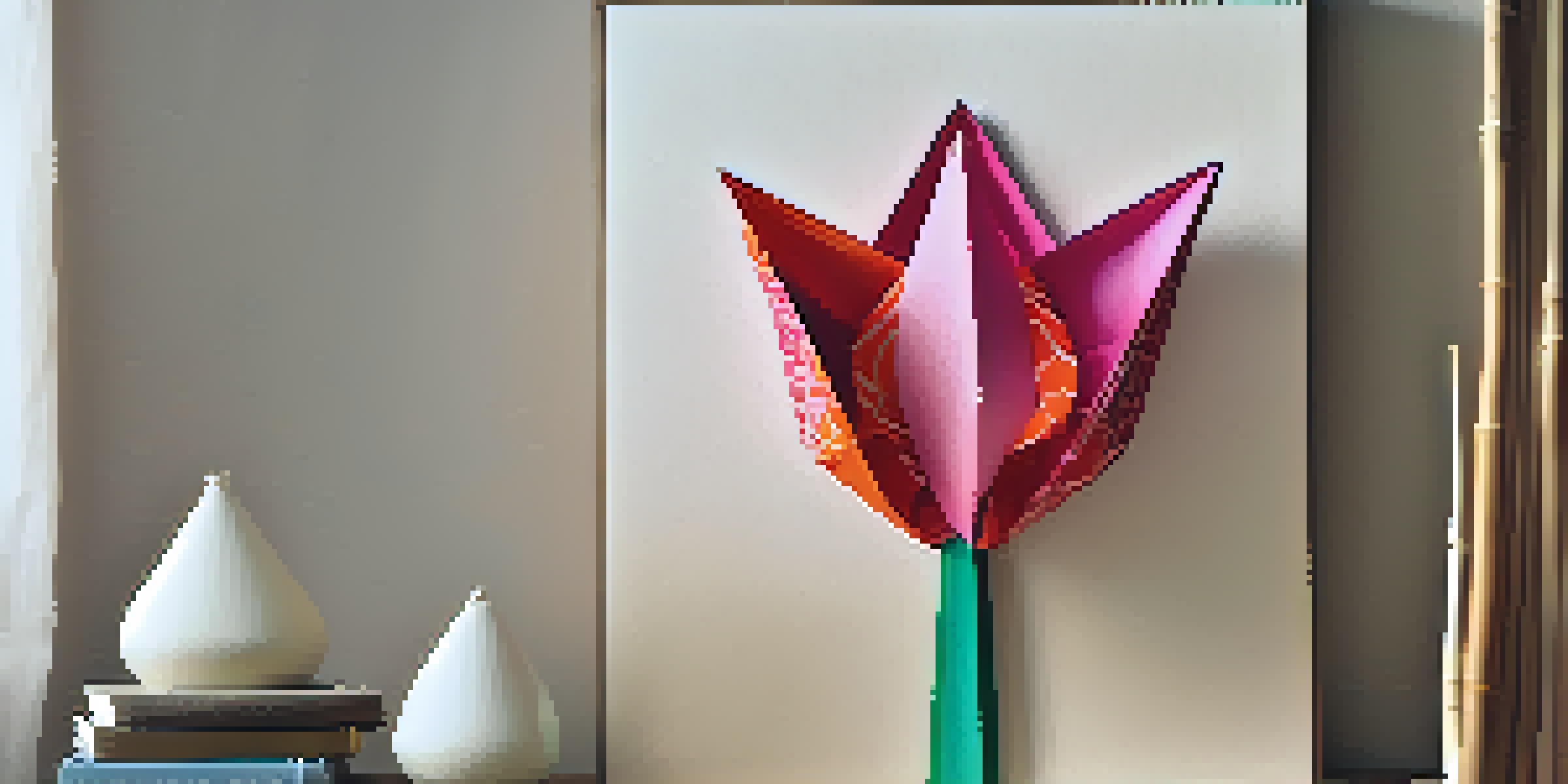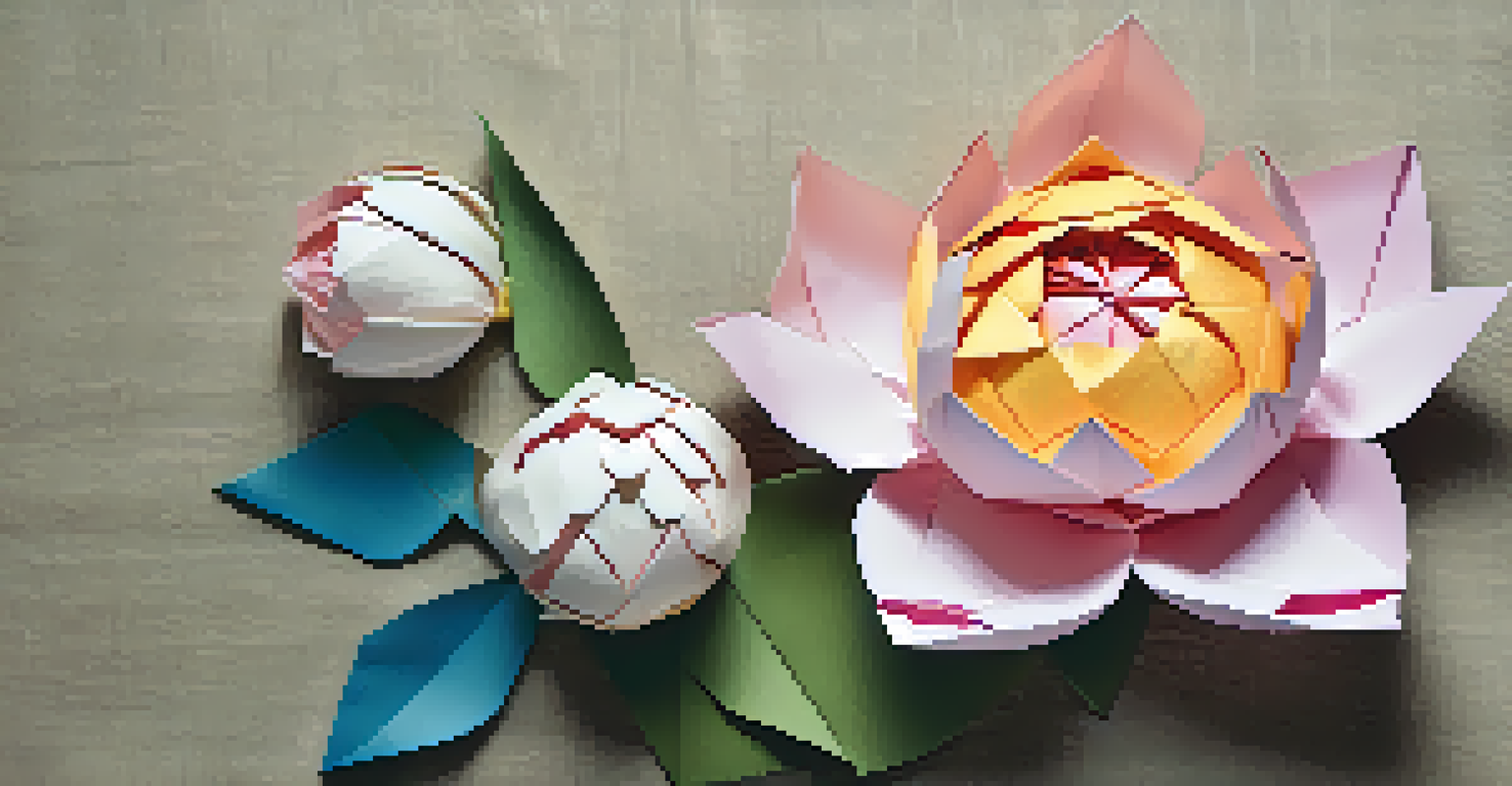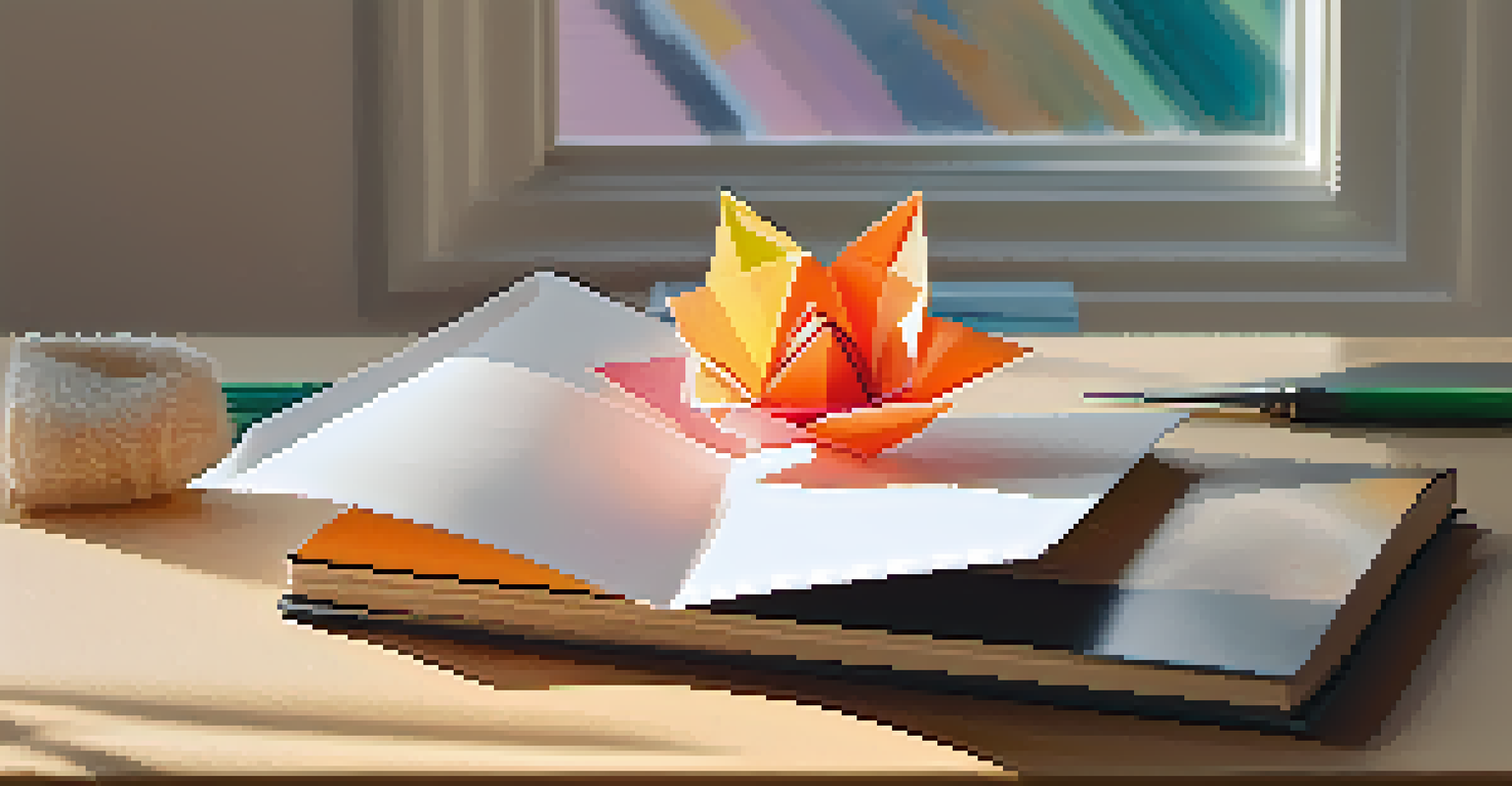Origami Flowers: Creating Beautiful Paper Blooms

The Fascinating History of Origami Flowers
Origami, the traditional Japanese art of paper folding, has a rich history that dates back centuries. Initially, this craft was tied to religious ceremonies and celebrations, showcasing the beauty of paper manipulation. As time evolved, so did origami, branching into various styles and techniques, including the intricate creation of flowers.
Origami is a way of expressing my feelings, my thoughts, and my ideas through paper.
The beauty of origami flowers lies not just in their aesthetic appeal but also in the cultural significance they carry. They often symbolize love, beauty, and the transient nature of life, much like real flowers. This connection adds depth to the practice, making each folded bloom a meaningful piece of art.
Today, origami flowers are popular worldwide, enjoyed by hobbyists and artists alike. From simple designs perfect for beginners to complex arrangements that challenge even seasoned folders, origami flowers offer something for everyone, allowing creativity to blossom.
Essential Materials for Origami Flower Creation
Before diving into the art of origami flowers, it’s essential to gather the right materials. All you really need is a square piece of paper, which can be any size, color, or texture that inspires you. Specialty origami paper often has printed designs or colors on both sides, adding an extra flair to your creations.

In addition to paper, having a smooth, flat surface to work on will make your folding easier and more precise. A bone folder—a tool used to create sharp creases—can also enhance the final look of your flowers. However, many beginners start with just their hands, and that’s perfectly fine!
Origami Flowers Have Deep Roots
Origami flowers not only showcase artistic beauty but also carry cultural significance, symbolizing love and the fleeting nature of life.
Don’t forget about your creative spirit! While the materials are important, the joy of folding and experimenting is what truly brings origami flowers to life. Allow yourself to explore different styles and techniques as you create your paper blooms.
Basic Folding Techniques for Beginners
Getting started with origami flowers is all about mastering a few basic folding techniques. The valley fold and mountain fold are the cornerstones of origami, providing the foundation for most designs. A valley fold creates a 'V' shape, while a mountain fold results in a peak, similar to folding a piece of paper in half.
The beauty of origami is that it can be both an art and a science, a challenge and a joy.
Once you're comfortable with these basic folds, you can move on to more advanced techniques like reverse folds and pleats. These methods add dimension and detail to your flowers, transforming simple shapes into stunning blooms. Practice is key, so don’t get discouraged if your first attempts aren’t perfect.
A great way to practice is by following step-by-step tutorials available in books or online. Many resources provide clear visuals and instructions, making it easier for beginners to grasp the concepts. With time and practice, you'll find yourself folding flowers with confidence!
Popular Origami Flower Designs to Try
There are countless origami flower designs to explore, each with its unique charm. The classic origami crane is a popular choice, but flowers like the origami lotus and rose are also favorites among enthusiasts. Each design offers a different level of complexity, making it an exciting challenge.
The origami tulip, for instance, is a delightful beginner project that results in a cheerful bloom. With just a few simple folds, you can create a vibrant tulip that’s perfect for decorating your space. Once you’ve mastered the tulip, why not try creating a bouquet of them?
Basic Techniques for Beginners
Mastering fundamental folding techniques like valley and mountain folds is essential for creating beautiful origami flowers.
For a more intricate project, the origami peony presents a beautiful challenge. This flower features layered petals that can be folded using various techniques, allowing for creative expression. As you explore different designs, you’ll find joy in the diversity and beauty of origami flowers.
Adding Color and Personal Touches to Your Flowers
One of the exciting aspects of creating origami flowers is the ability to personalize them through color and texture. You can use patterned paper, metallic finishes, or even recycled materials to give your flowers a unique touch. The choice of paper can completely change the look and feel of your finished piece.
Consider adding embellishments like glitter, stickers, or even hand-drawn designs to make your flowers stand out. These small personal touches can transform a simple origami flower into a cherished gift or a beautiful decoration for your home. Let your imagination run wild!
Furthermore, you can create themed bouquets for different occasions—think pastel colors for spring or vibrant hues for a summer celebration. The versatility of origami allows you to craft flowers that fit any mood or event, making your creations even more special.
Displaying and Gifting Your Origami Flowers
Once you've mastered the art of origami flowers, the fun doesn’t stop there! Finding creative ways to display your flowers can add a lovely touch to your home decor. Consider placing them in a decorative vase or arranging them in a shadow box to showcase your work.
Gifting origami flowers is another wonderful way to share your creations with loved ones. A bouquet of handmade paper blooms can be a heartfelt present for birthdays, anniversaries, or special occasions. You can even pair them with a handwritten note to add a personal touch.
Personalize Your Origami Creations
Using different colors, textures, and embellishments allows you to infuse personal touches into your origami flowers, making them unique.
Moreover, consider making origami flowers as part of a larger project, such as a scrapbook or a handmade card. The possibilities are endless, allowing you to spread joy and creativity through your paper blooms.
Joining the Origami Community for Inspiration
As you delve deeper into the world of origami flowers, connecting with others who share your passion can be incredibly rewarding. Online platforms, social media groups, and local workshops offer opportunities to learn and grow within the origami community. Engaging with fellow enthusiasts can provide inspiration and motivation to explore new techniques.
You might also discover numerous resources, such as tutorials, videos, and books, that can help you enhance your skills. Many experienced folders love sharing their knowledge, making it easier for beginners to learn and improve. Don’t hesitate to ask questions or seek advice from others.

Attending origami conventions or meetups can also be a fun way to immerse yourself in this art form. These events often feature workshops, demonstrations, and opportunities to showcase your creations. By joining the community, you’ll not only improve your skills but also make lasting friendships along the way.